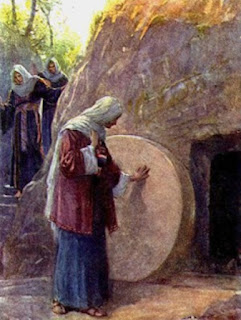
In the provinces, only the governors, and in Egypt the prefect, had imperium and hence iurisdictio; and normally petitions, that is, a petition or application for the case of accusing the defendant (accusatio) and confronting him/her with a trial (cognitio), would be directed to the governor or Prefectus Aegyptie. But no governor could hear all the cases directed to him, and as the result he would assign or delegate (exanapompēs) some cases to subordinate magistrates, iudices pedanei (or dati), a term rendered simply as kritai in the Greek of the eastern provinces.[2] That this official administrative judicial procedure was enforced early in the first-century, is attested by P. Oxy. 37-38 (dated to 49 CE)[3] and P. Oxy. 3464 (dated to ca. 54-60 CE).[4] We even can push its enforcement back to the reign of Augustus (31 BCE-14 CE), if we take into consideration the judicial process of “status examination” (epikrisis or eiskrisis) for Roman or non-Roman citizens in Roman Egypt. These examinations, sometimes conducted by the prefect or his deputies, were initiated during Augustus’ reign and were part of an administrative reorganization by the Roman government. The following comparative information concerning the Roman judicial procedure of status examination should be kept in mind.
About a hundred papyrus documents dated to the first three centuries CE record the process of status examination (epikrisis or eiskrisis) which was enforced on Roman or non-Roman citizens in Roman Egypt. Procedurally, an individual’s application for claiming the right to a particular status would be examined, verified and determined. If the applicant was properly qualified and his formal application was granted, the new status was then conferred and a certificate declaring the new status was issued. The official declaration of the new status of the applicant was important for, among other matters, claiming an inheritance or receiving other rights of citizenship, for example, enrollment in the military service or being wholly exempt from the poll-tax or having the right to reside in a province.
Carroll A. Nelson in his Status Declarations in Roman Egypt[5] has studied a number of such papyrus documents and analysed the form and function of such status declarations in Roman Egypt. Of the papyrus documents Nelson has analysed, some, dated from the beginning (103 CE) to the end of the second century (188 CE), contain records of examinations conducted directly by the prefect of Egypt or by his representatives upon Roman citizens and their dependants (slaves and freedmen) in matters such as establishing status or guaranteeing rights (pp. 40-46). Nelson, on p. 44, states, “that the prefect or his deputies conducted the examinations ... means that the highest administrative office in the province handled the epikrisis of these citizens either because they were Romans or because their epikrisis involved something which was not or could not be handled on the nome [a province of ancient Egypt] or metropolis level of government.” Some of the papyri Nelson analysed (for example, P. Oxy II 257; P. Oxy X 1266; P. Oxy XII 1452; P. Oxy. XVIII 2186; PSI V 457; PSI VII 731) contain a reference to, or a citation from, a list or a documentary account dated to 4 or 5 CE (“in the thirty-fourth year of Augustus” [31 BCE-14 CE]) (pp. 28-35). Conclusively, Nelson stresses that “In the first place, all available evidence points to these declarations and the examinations for status as exclusively Roman procedures which probably were initiated during the reign of Augustus and were part of an administrative reorganization by the Roman government” (p. 66) and “through status declarations and the records which they provided for nome and provincial officials, the Roman government was able to administer and control more efficiently her citizens and subjects in Egypt.” (p. 67).
Notes
[*] The image of the titulus crucis attached on this post is unusual. You should read the second and the third lines of the text from right to left, an unusual manner of writing in Greek and Latin. But I love it as an expression of art. In this blog, I have provided another image of the titulus crucis which is written in a normal way; to see this, click here.
[1] Brown, Death of Messiah, 2.967-68; cf. 1.717-19.
[2] Gary A. Bisbee, Pre-Decian Acts of Martyrs and Commentarii (HDR 22; Philadelphia: Fortress Press, 1988) 22; Peter Garnsey, “The Criminal Jurisdiction of Governors” in Journal of Roman Studies 58 (1968) 51-59; A. H. M. Jones, The Criminal Courts of the Roman Republic and Principate (Oxford: Blackwell, 1972) 104; Naphtali Lewis, “The Prefect’s Conventus: Proceedings and Procedures” in Bulletin of the American Society of Papyrologists 18 (1981) 125 [119-128].
[3] Bernard P. Grenfell and Arthur S. Hunt (eds.), The Oxyrhynchus Papyri Part I (London: Egypt Exploration Fund, Graeco-Roman Branch, 1898) 79-82; Revel A. Coles, Reports of Proceedings in Papyri (Papyrologica Bruxellensia 4; Brussels: Fondation Egyptologique Reine Elisabeth, 1966); Gary A. Bisbee, Pre-Decian Acts, 91.
[4] A. Bülow-Jacobsen and J.E.G. Whitehorne, eds., The Oxyrhynchus Papyri vol. xlix (London: Egyptian Exploration Society, 1982) 117-119; idem, The Oxyrhynchus Papyri nos. 3431-3521 (London: Egyptian Exploration Society, 1980); Gary A. Bisbee, Pre-Decian Acts, 24, 29.
[5] (American Studies in Papyrology vol. XIX; Amsterdam: Adolf M. Hakkert, 1979).



